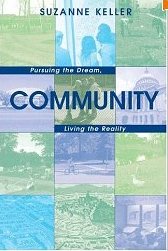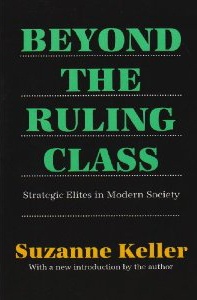College Admissions
College Admissions
Preparing for College
The Best College for You
What to Study
Applications
Education Options
Education Options
Private Universities
Public & State Universities
Community Colleges
Scholarships
Scholarships
African American Scholarships
Latino Scholarships
Native American Scholarships
Women Scholarships
College Grants
College Grants
Federal Grants
Merit Based Grants
Need Based Grants
Student Loans
Student Loans
Federal Student Loans
State Student Loans
No Co-signer Student Loans
Bad Credit Loans
Student Loan Consolidation
College Survival
College Survival
Financial Aid Tips
The Digital Student Blog
There is much more to work-study than just the monetary benefit.
College is first and foremost about earning that all-important degree. Successful students always remember why they are in school and structure their time according to the academic demands placed on them.
But a growing body of research reveals that working on campus while in college pays enormous dividends for students. Those benefits come not only in the form of some much-needed cash to help with the college bills, those opportunities provide students a breadth of experiences that help them better round out their college years.
Work-Study Options
 On-campus work-study programs provide students with part-time employment options during their college years. These programs come in two basic formats: Federal Work-Study and non-Federal Work-Study, often called Student Work Initiative programs.
On-campus work-study programs provide students with part-time employment options during their college years. These programs come in two basic formats: Federal Work-Study and non-Federal Work-Study, often called Student Work Initiative programs.
Federal Work-Study (FWS) is actually a form of financial aid that is awarded to students based upon demonstrated financial need. Therefore, to be awarded Federal Work Study students must first fill out the Free Application for Federal Student Aid (FAFSA) as well as any other financial aid documents required by their school.
Ultimately, to be awarded Federal Work Study a student must meet certain financial eligibility requirements. And to be considered for this option, students must also check “yes” on the FAFSA form where it specifically asks if you are interested in student employment. If you are eligible for Federal Work Study, your financial aid award letter will indicate as such.
While most students work from 10 to 15 hours a week, the amount of hours and thus the sum of money you will be allowed to earn cannot exceed the total amount noted in your total FWS award. It is also important for students to realize that qualifying for FWS will enable them access to specific job opportunities but that students will still need to interview for and secure the actual position (sometimes only a formality but for the best work options more than one qualified student will often be seeking a specific position).
Non-Federal Work-Study (non-FWS) or Student Work Initiative programs are not based on financial need. If you filled out the FAFSA only to learn you did not qualify for FWS, you can still inquire about student employment opportunities on-campus.
Though work options always will exist off-campus, on-campus work-study provides students two key advantages. First, transportation to and from work will never be an issue. Second, on-campus employers are far more accommodating regarding your need to place school first in your life. Therefore, they are more likely to provide you that much-needed flexibility when exams pile up.
And it is important to note that one of the best aspects of Non-Federal Work-Study or Student Work Initiative options is that there is no limit placed on earnings. Therefore, at times when other students are not interested in working you can pick up even more hours should you want to do so.
Benefits of On-Campus Employment
There is little doubt that most college students take a job for the financial benefits associated with it. For some, work is absolutely necessary to help them pay their related educational expenses. For others, employment provides some basic spending money for incidentals and for treating themselves to the occasional night out.
Though most students do work while in school, some believe that working during college serves as a distraction from what should be a student’s primary focus: their academics. But the 2008 National Survey of Student Engagement demonstrated that working while in school was positively associated to student engagement.
Similarly, it is now clear that the work-world can serve to enrich the college experience. Far from being a distraction for students, working during college has proven to be one of the places where students develop two critical employment and life-related skills: teamwork and time management.
 Even working in the school cafeteria can help students develop fundamental work habits. But securing employment with a specific department related to your field of study can provide students with the potential to deepen and enrich what they are learning in the classroom. Perhaps most importantly, working students find their on-campus work experiences help them clarify their career aspirations.
Even working in the school cafeteria can help students develop fundamental work habits. But securing employment with a specific department related to your field of study can provide students with the potential to deepen and enrich what they are learning in the classroom. Perhaps most importantly, working students find their on-campus work experiences help them clarify their career aspirations.
For all of these reasons, the idea of working while on campus is fundamental to the mission of such work colleges as the College of the Ozarks, Alice Lloyd and Berea. These colleges make work and service a fundamental of their educational philosophy.
Give Careful Consideration
Clearly, students can benefit significantly from working while in college. Everything from reducing the amount of money they borrow to rounding out the college experience makes working while in school often one of the most important aspects of the college years for all students.
Such experiences can of course be gained off campus also in the right setting and with the right employer. So those options are deserving of pursuit as well.
But students interested in work-study will generally find a wealth of options on campus where flexibility reigns and transportation is simply not an issue.
There are times when we are reminded of just how much society has changed over the last 100 years. The recent death of Sociologist Suzanne Keller represents just such a case.
Professor Keller holds the important distinction of being the first woman ever granted tenure at Princeton University. Though it is very hard to imagine, she was granted that status in 1968 after having begun her association with the school as a visiting professor just two years before.
We say hard to imagine because it does not seem possible that it would take until 1968 for Princeton to have a tenured women professor. But it shows just how far women have had to come to break the glass ceiling.
 And now, barely forty years later, four of the elite Ivy League schools, once the bastion of male dominance, currently feature female presidents.
And now, barely forty years later, four of the elite Ivy League schools, once the bastion of male dominance, currently feature female presidents.
Historical Perspective
Yes 1968 seems quite late considering the progress women had made since the turn of the century. First, Professor Keller’s appointment came nearly 50 years after the ratification of the 19th Amendment that prevented any citizen from being denied the right to vote based on that citizen’s sex (August 18, 1920).
It would also be a full 52 years after Jeannette Ranking of Montana became the first woman to serve in Congress (1917) and another 36 years after Hatie Wyatt Caraway became the first woman to ever be elected to the US Senate (1932). And it would be 32 years after Ruth Benedict became the first tenured woman at Columbia University in 1937.
But of course, Princeton remained all male until the late 1960s. It was not until 1961 that Sabra Follett Meservey, the first woman in the University’s history, would be enrolled as a full-time degree candidate. Meservey entered as a graduate degree student.
The first full-time undergraduate female students were admitted in 1963 when the Critical Languages Program (CLP) was introduced. A one year program offered during a student’s junior year, this program allowed students from other colleges to spend a year at Princeton studying Arabic, Chinese, Japanese, Persian, Russian, and Turkish languages and related regional studies. The first five women to attend the CLP program at Princeton were actually dubbed “Critters” by resident Princetonians.
It would not be until September of 1969 that the first freshman class would feature females. That year, 101 freshman and 70 transfer students joined the ranks of the Princeton student body. Four year’s later when the first graduating class of coeds left campus one young lady would be the school’s only Marshall scholarship winner that year while another would be one of the school’s three Fulbright recipients.
Importance of Women and Tenure
The much sought after tenure designation has been a critical choking point for women seeking advancement in higher education. It is the first, and most necessary step in a process that can one day lead to administrative leadership positions such as dean and of course, university president.
Tenure has always been a critical issue for all educators who seek to become full professors. It begins with the enormous demands placed on potential candidates to prove themselves early on in their teaching careers.
But the greatest issue is that the quest for tenure, once underway, puts faculty on a time clock. And that clock would never stop easily, most certainly not for pregnancies and the demands of balancing life with work for women.
 In retrospect, the appointment of Keller had to have been a relatively easy one for the school. The sociologist, known for her pioneering research topics on social stratification, community life and elites, authored what has been deemed one of the ground-breaking texts on elite life in America, “Beyond the Ruling Class: Strategic Elites in Modern Society,” published in 1963.
In retrospect, the appointment of Keller had to have been a relatively easy one for the school. The sociologist, known for her pioneering research topics on social stratification, community life and elites, authored what has been deemed one of the ground-breaking texts on elite life in America, “Beyond the Ruling Class: Strategic Elites in Modern Society,” published in 1963.
The native of Vienna, Austria, would later write “Community: Pursuing the Dream, Living the Reality,” regarding her research on middle class life and the need for people to have a sense of connectedness to a larger framework.
Special Place in Princeton History
Professor Keller moved to New York as a child and would later become an American citizen. She had an exemplary academic record completing her undergraduate degree at Hunter College, a master’s degree in social work from Rutgers and a Ph.D. in sociology from Columbia University.
But the respected researcher will always be known by her work at Princeton where she also played a major role in promoting women’s studies as an academic subject and taught the university’s first course on gender during the 1970s. That represented the first of the necessary steps towards the development of women’s studies as a formal program at the once all-male university.
Her place in Princeton history was recognized by Nancy Weiss Malkiel, Princeton’s dean of the college and a professor of history. Dean Malkiel offered the following appraisal of Professor Keller’s importance at Princeton:
“As the first woman appointed to a tenured professorship at Princeton, Suzanne Keller holds a unique position in the history of the university. As a remarkable scholar, teacher and mentor, and a wise and generous colleague, she holds a special place in the lives and hearts of generations of Princetonians.”
Last week we shared with readers the story of 23-year-old Kelli Space, her $200,000 plus in student loans, and her unique method of addressing her dire position. At last check, the young lady had secured donations totaling more than $7,500. Though still $192,500 more is needed, she has to be pleased with both the publicity her plight has drawn and the fact that she is making some progress.
This past week, Justin Cox revealed his effort to deal with his equally difficult position. He too has his own web site, StrummingAwayMyLoans, and has resorted to the loan challenge in what some might call a beggarly way.
“For the next year, I will play music in public at least once per week (in a subway, on a corner, in a coffee shop, wherever),” writes Cox. “I’ll keep a tip jar in front of me, and every single penny I make will be thrown in the direction of those loans. It will be both financially productive and artistically healthy.”
 While some might cast this street musician in a negative light, Cox’s philosophy on the issue is transcendent of the typical view. In fact, there is a lot of respect for someone who notes that there are options for those willing to search.
While some might cast this street musician in a negative light, Cox’s philosophy on the issue is transcendent of the typical view. In fact, there is a lot of respect for someone who notes that there are options for those willing to search.
“Whether it’s cooking, painting, jewelry making or working on your car, your debt can be the motivational catalyst that forces you to revive a dying passion or hone a natural talent,” states Cox. “It’s the ultimate, lemons-into-lemonade approach.”
It is nice to see someone digging deep, looking for any way to earn some additional funds to address their college debt. But street musician is a tough way to make a buck – instead of some $7,500 Cox reveals he took in 37 dollars in his first full month. Not exactly game changing when your loan payment is some $700 a month.
Other Unique Options
Young Mr. Cox and Ms. Space offer their unique approaches to what is a very tough situation. As for other unusual methods, the folks at CollegeScholarships offer some unique options as well.
Suggestion number 110 on their list represents just such an option:
We’re not endorsing prostitution, but if you can give some of yourself by donating blood plasma, you can net an extra couple hundred dollars a month.
Number 111 is similar.
Volunteer for a medical study. Most do not require much time and you get paid!
They do not suggest as much but we know of a young woman who has been giving thought of donating her eggs to a fertility clinic.
Yes, there are the ethical concerns associated with being a donor or being a guinea pig in a medical study, but then again we would suggest there are ethical concerns associated with virtually all of the aforementioned methods.
But if you took out those loans, then there are the ethics associated with meeting your loan payments.
Get Busy Taking Control
But it is suggestion numbers 112 and 113 at CollegeScholarships, two that mirror the philosophy of one Mr. Cox, that we like best.
Sell your expertise in a subject as a tutor, computer skills, music lessons.
We would add that while tutoring you counsel your charges to think twice about taking on gobs of debt.
Get a job in the food service industry. Chances are high that you can eat for free!
Yes, even if it is only to work part-time, flipping burgers could carry some much needed benefits.
Here we turn back to Mr. Cox and his philosophy:
“The goal is not fame and fortune; it’s art and, hopefully, a little bit of financial relief. I still get stressed by the fact that I’m staring down the barrel of decades of debt, but I take some very real comfort in the fact that I might strum a few of those years away.”
The bottom line is get busy – taking charge of your situation is the first step towards progress and ultimately feeling better about yourself.
We shared with readers earlier in the week the scathing report from The Education Trust called Subprime Opportunity: The Unfulfilled Promise of For-Profit Colleges and Universities. While just the latest in a long line of criticism about for-profits, the document proved to be the most scathing rebuke of the industry to date.
Over the week we have delved deeper into the report. One aspect we wanted to review further was an area that some have held up as a shining light for the for-profit industry. We are talking about the graduation rates at two-year and less than two-year schools.
 First and foremost, I agree to an extent with those who offer the mindset that attending college can be a win-win. After all, it is great to have one’s horizon’s expanded and it goes without saying that the knowledge gleaned can’t help but make a student a more productive citizen in the long run.
First and foremost, I agree to an extent with those who offer the mindset that attending college can be a win-win. After all, it is great to have one’s horizon’s expanded and it goes without saying that the knowledge gleaned can’t help but make a student a more productive citizen in the long run.
But at the same time, I am a firm believer that attending college becomes a win-win only if one earns that coveted sheepskin. After all, it is the diploma that generally provides students an opportunity to pursue better paying jobs that also carry with it those much-needed benefits.
In this single arena, the report does indicate that for-profit colleges are actually setting a pretty decent standard. According to the report, the graduation rate for associate degree programs or certificates at two-year for-profits is 60 percent. At the less than two-year for-profits, 66 percent earn a credential.
These percentages are based on completion of a program within the standard three-year time frame (as compared to six years to earn a bachelor’s degree). These completion rates are of course considerably higher than the 22-percent rate posted by community colleges.
One Big Problem
But the folks at Education Trust point out that this completion rate, while far better than the current rate of their public competitors, comes at a heavy price. The report clearly indicates that for-profits are leaving students with significant amounts of debt whether or not we are talking about bachelor’s degrees or associates.
First off, 19 percent of associate’s degree students and 3 percent of those completing a certificate at for-profits have debt loads greater than $30,000. That number is actually 25 percent more than the average debt incurred by all graduates of bachelor degree programs in America.
In contrast, only 2 percent of associate’s degree recipients and 1 percent of those students receiving a certificate at public institutions graduate with that level of debt.
But the real negative has to be the default rates of for-profit students. While college should lead to a path of higher earnings in the long run, it appears that students graduating from for-profits cannot earn enough money to pay back all the funds they have borrowed.
Sadly about 10 percent of for-profit students default on their federal loans within two years of entering repayment. Worse yet, the three-year rate of default nearly doubles to 19 percent.
These default rates are roughly twice the rates of students at public and private nonprofit colleges. In sum total, 43 percent of all federal student loan defaults come from students at for-profit schools. However, only 12 percent of college students attend for-profit schools.
Sum Total
At the bachelor’s level, for-profits have an abysmal graduation track record. At the associate and certificate level these institutions are producing better results than public community colleges.
But the high cost of programming leaves many significantly in debt. Most importantly, the high default rates reveal far too many students cannot overcome their debt burden.
Such a situation calls into question the actual value of the degree itself. It leaves us thinking that the sheepskin from these institutions is simply not worth the cost of attendance.